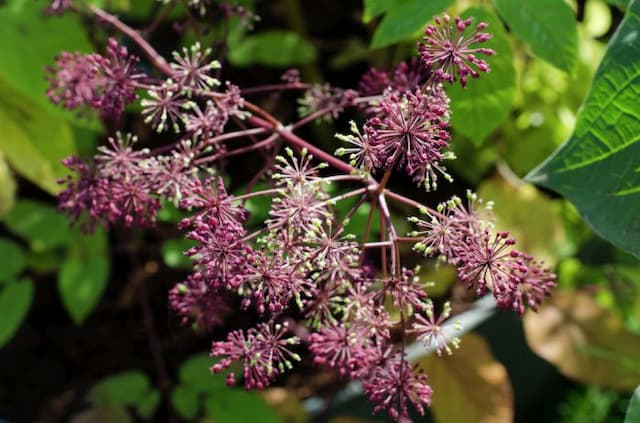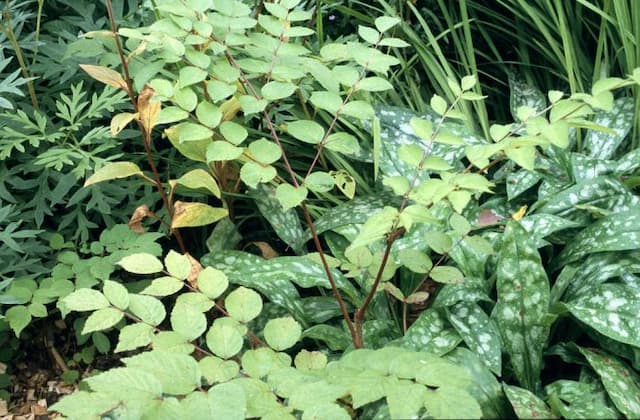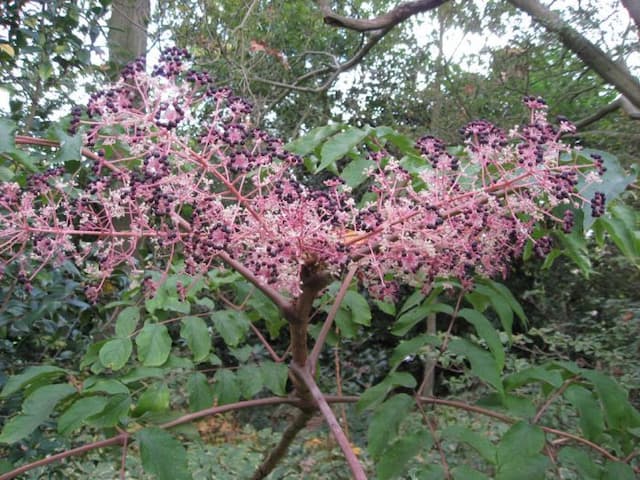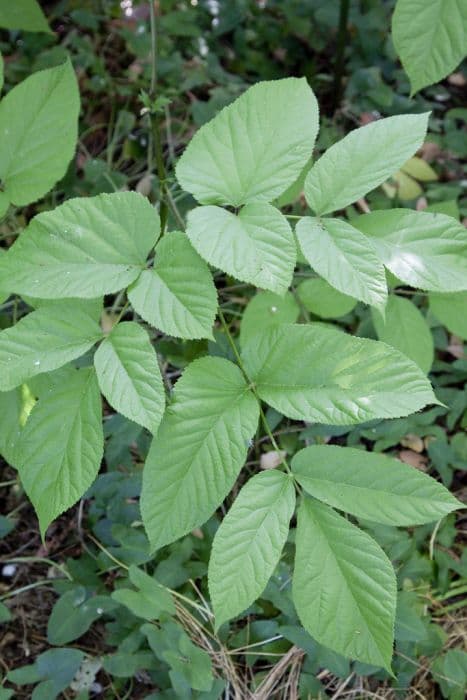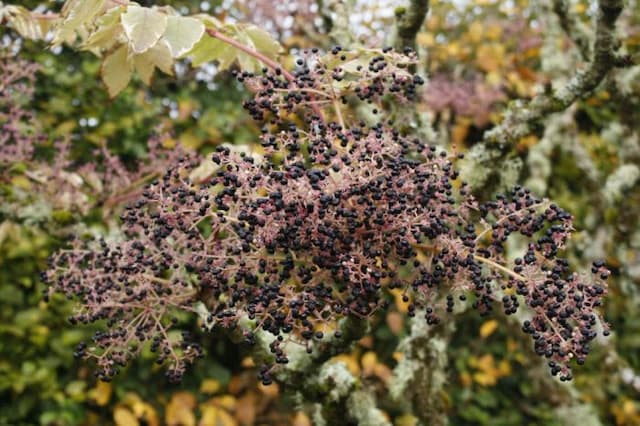Australia umbrella tree Schefflera actinophylla



ABOUT
Schefflera actinophylla, also known as the Australian umbrella tree or the Octopus tree, is an evergreen perennial plant that can grow up to 30 feet tall in its native habitat. The plant has a thick, woody stem and a dense canopy of glossy, dark green leaves. The leaves are large, with a glossy surface and are palmate in shape, meaning that they radiate out from a central point like the ribs of an umbrella.
The leaves are typically about 8 inches long and are made up of 7 to 9 leaflets that are arranged in a circular pattern around the stem. Each leaflet is oval in shape and has a pointed tip. The plant produces clusters of small, inconspicuous flowers that are followed by small, fleshy fruit.
The bark of Schefflera actinophylla is smooth and grayish-brown in color. It is relatively thin, and the plant's branches are often visible through the bark. The plant's root system is shallow and fibrous, which makes it well-suited to growing in containers or in small gardens. The plant is often used as a houseplant or in indoor gardens, as it can tolerate low light levels and is relatively easy to care for.
About this plant
 Names
NamesFamily
Araliaceae
Synonyms
Queensland umbrella tree, Octopus Tree, Amate, Australian Ivy, Palm, Schefflera, Starleaf, Umbrella Tree, Australian umbrella tree
Common names
Brassaia actinophylla, Brassaia singaporensis, Schefflera actinophylla
 Toxicity
ToxicityTo humans
The Schefflera actinophylla plant is toxic to humans when ingested.
It contains calcium oxalate crystals, which can cause irritation and burning in the mouth, throat, and stomach. Ingestion can also lead to vomiting, abdominal pain, and difficulty swallowing. Touching the plant can cause skin irritation and rash.To pets
The Schefflera actinophylla plant is also toxic to animals.
The calcium oxalate crystals present in the plant can cause irritation and burning in the mouth, throat, and stomach when ingested. This can lead to symptoms such as drooling, vomiting, and difficulty swallowing. The plant's leaves, stem, and fruit contain the toxic compounds and can cause the same symptoms as in humans. Ingestion of large amounts of the plant can be fatal to animals.
 Characteristics
CharacteristicsLife cycle
Perennials
Foliage type
Evergreen
Color of leaves
Green
Flower color
Red
Height
Up to 50 feet
Spread
Up to 50 feet
Plant type
Tree
Hardiness zones
10
Native area
Australia, New Guinea, Indonesia
Benefits
 General Benefits
General BenefitsSchefflera actinophylla is a popular ornamental plant due to its large, glossy, dark green leaves and dense canopy. It is often used as a houseplant or in indoor gardens, and can be grown in containers or small gardens;
Schefflera actinophylla has been shown to effectively remove volatile organic compounds (VOCs) from the air. These compounds can be harmful to human health and are found in a wide range of common household products, such as cleaning supplies and paints;
The Schefflera actinophylla plant has a high transpiration rate, which means it releases a lot of water vapor into the air. This can help to increase humidity levels in the surrounding air, which can be beneficial for people with dry skin or respiratory issues;
Schefflera actinophylla is relatively easy to care for and can tolerate low light levels. It is a good choice for people who want a plant that does not require a lot of attention. Medical Properties
Medical Propertiest is important to note that there is limited scientific research on the medicinal properties of this plant, and more studies are needed to confirm its effectiveness:
The leaves of the plant have been used to treat inflammatory conditions such as rheumatism and arthritis;
The sap of the plant has been used to treat cuts, wounds, and skin infections.
It is important to note that self-medicating with this plant should be avoided, and it is always best to consult with a medical professional before using any plant-based remedies. Air-purifying Qualities
Air-purifying QualitiesSchefflera actinophylla has been shown to have air purifying qualities. Studies have demonstrated that the plant is effective at removing volatile organic compounds (VOCs) from the air. VOCs are a group of chemicals that are found in a wide range of common household products, such as cleaning supplies, paints, and pesticides. They can be harmful to human health and have been linked to a number of health issues, such as headaches, allergic reactions, and respiratory problems.
 Other Uses
Other UsesStudies have found that the plant contains compounds that have insecticidal properties. Some people use extracts from the plant to repel mosquitoes and other insects.
Interesting Facts
 Feng Shui
Feng ShuiIn feng shui, Schefflera actinophylla is believed to bring good luck, prosperity and wealth when placed in the right location.
It is often placed in the wealth or prosperity area of a home or office, which is the southeast corner of the room or space. The plant is also said to promote positive energy flow and balance in a room.
 Water
WaterSchefflera actinophylla prefers evenly moist soil and should be watered when the top inch of soil is dry to the touch.
It is a good idea to use a moisture meter to check the soil moisture level. In general, you should water the plant once a week, but this may vary depending on the humidity and temperature in your area.
It's important to not let the soil dry out completely, but also not to overwater the plant, as it can cause root rot. Light
LightSchefflera actinophylla prefers bright, indirect light but can tolerate low light conditions.
It can be placed near a window with filtered light or in a room with fluorescent lighting. However, direct sunlight can cause the leaves to scorch, so it's best to avoid placing the plant in direct sun. Temperature
TemperatureSchefflera actinophylla prefers temperatures between 60-75°F and can survive in temperatures as low as 50 degrees Fahrenheit.
It is not frost-tolerant, so it should be protected from freezing temperatures. It is also important to keep the plant away from drafts or sudden temperature changes. Pruning
PruningRegular pruning of Schefflera actinophylla helps to promote bushier growth and keep the plant healthy. You can prune the plant by cutting back the tips of the branches to encourage branching. You can also remove any yellow or damaged leaves to keep the plant looking neat and tidy. It's best to prune the plant during the growing season, in spring or summer.
 Soil
SoilSchefflera actinophylla prefers well-draining, slightly acidic soil with a pH between 5.5 and 6.5.
A good mix for this plant is two parts potting soil, one part perlite or coarse sand and one part peat moss. This mix will provide good drainage and prevent water from standing in the pot. Repotting
RepottingSchefflera actinophylla should be repotted every 2-3 years, or when the roots have filled the pot. When repotting, use a pot that is one size larger, and use the recommended soil mix. Be sure to not overpot, as the plant prefers slightly crowded roots.
 Humidity & Misting
Humidity & MistingSchefflera actinophylla prefers a humidity level between 40-60%.
If the air in your home is particularly dry, you can increase humidity by placing a tray of water near the plant or using a humidifier. The plant will also benefit from regular misting with water.
It's also important to avoid placing the plant near air conditioning or heating vents, as these can dry out the air and cause the leaves to drop. Suitable locations
Suitable locationsIndoor
All year round
Outdoor
Schefflera actinophylla is a tropical plant therefore, can only grow in tropical conditions.
The tree prefers bright, indirect light, and should be protected from direct sun. Provide well-draining soil. Water the plant when the top inch of soil is dry to the touch. Avoid overwatering as it can cause root rot.
Fertilize the plant once a month during the growing season (spring and summer) with a balanced, water-soluble fertilizer.
Prune the plant to promote bushier growth and remove yellow or damaged leaves.Hardiness zone
11 - 12 USDA
 Life cycle
Life cycleThe seed begins to germinate when conditions are favorable, such as proper temperature, moisture, and light.
In the vegetative growth stage, the plant focuses on growing leaves and stems and developing a root system.
In the reproductive growth stage, the plant begins to produce flowers and fruit, which are necessary for reproduction.
Once the plant reaches maturity, it stops actively growing and enters a dormant phase. Propogation
PropogationPropogation time
Spring - summer
By STEM CUTTINGS:
One of the easiest and most common ways to propagate Schefflera actinophylla is by taking stem cuttings. Cut a stem with a pair of leaves on it, remove the bottom leaves and let it dry for a day. Then, insert it into a moist potting soil and place it in a warm, bright location. The cutting should root in several weeks.
By LAYERING:
Air layering is a method of propagating a plant by encouraging roots to form on a stem while it is still attached to the parent plant. To air layer Schefflera actinophylla, make a small incision on a stem, dust it with rooting hormone powder and wrap it in moist sphagnum moss, then cover it with plastic wrap. After several weeks, the roots will develop and you can cut the rooted stem from the parent plant.
By SEEDS:
Schefflera actinophylla can also be propagated from seeds, however, it is a slower process. The seeds need to be sown in a well-draining, moist seed compost and kept at a temperature of about 75°F. Germination can take several weeks or even months.
By ROOTED LEAF CUTTINGS:
Another way to propagate Schefflera actinophylla is by rooted leaf cuttings. To do this, remove a leaf from the stem and insert the stem end into a pot of moist soil. Keep the soil moist, and after a few weeks, roots will form and a new plant will grow.
 Pests
PestsSpider mite, Whitefly, Scale insects, Mealybug, Aphid
 Diseases
DiseasesAnthracnose, Root Rot, Powdery mildew, Leaf spot



